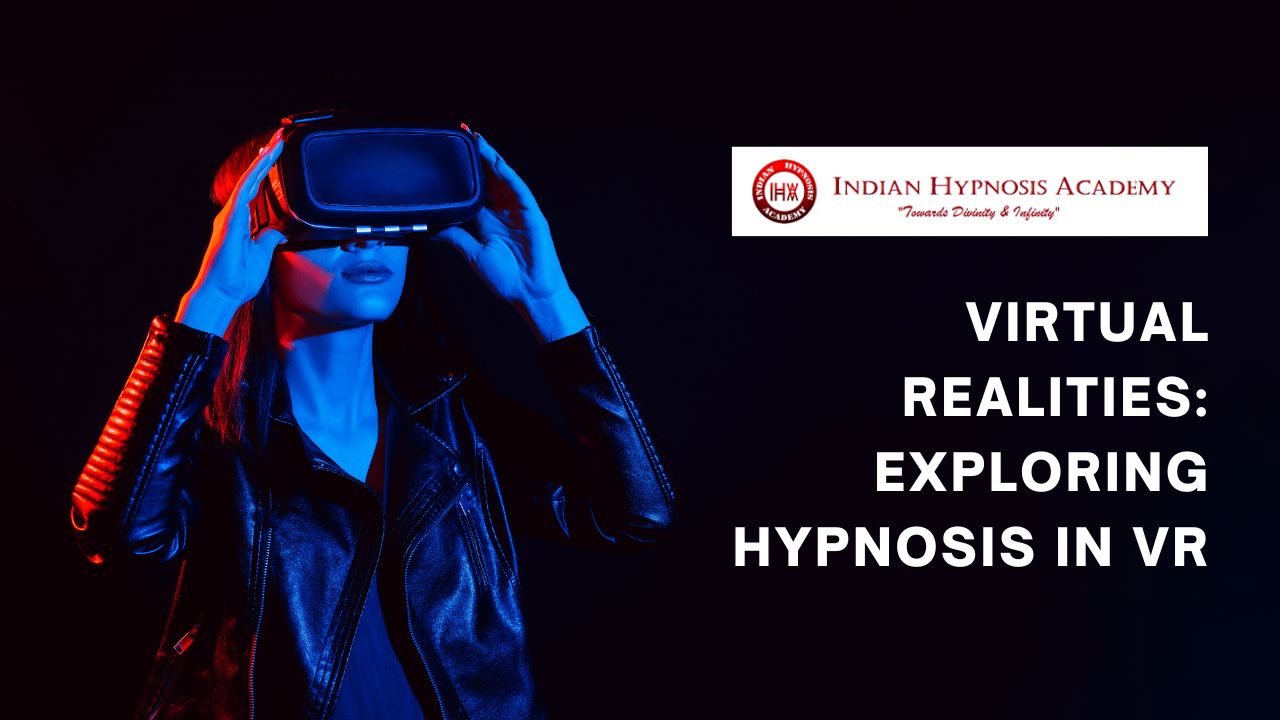Introduction to Virtual Reality and Hypnosis
Step into a world where your mind is the canvas and possibilities are limitless. Welcome to the realm of Virtual Reality (VR) and Hypnosis, where cutting-edge technology meets ancient techniques for transforming consciousness. In this blog post, we will explore the exciting fusion of VR and hypnosis, uncovering its wide range of benefits, how it works, success stories from real-life case studies, potential risks, and the future that lies ahead. So fasten your seatbelts and get ready for an exhilarating journey into virtual realities that can unlock hidden potentials within you!
Benefits of Combining VR and Hypnosis
Virtual Reality (VR) and hypnosis are both powerful tools on their own, but when combined, they have the potential to create a truly transformative experience. By harnessing the immersive nature of VR technology and the therapeutic benefits of hypnosis, this innovative approach is opening up new possibilities for personal growth and healing.
One of the key benefits of combining VR and hypnosis is the ability to create a controlled and customizable environment. In traditional hypnotherapy sessions, clients often rely on their imagination to visualize scenarios or experiences. With VR, these visualizations can be brought to life in stunning detail. Whether it’s overcoming fears through exposure therapy or practicing new behaviors in realistic simulations, VR provides a safe space for individuals to explore their thoughts and emotions.
Another advantage is that virtual reality allows for enhanced focus and concentration during hypnosis sessions. The immersive nature of VR blocks out external distractions, enabling individuals to fully immerse themselves in the hypnotic experience. This heightened level of engagement can lead to deeper relaxation and increased receptivity to suggestions.
Additionally, using VR in combination with hypnosis can help overcome geographical limitations. Traditional face-to-face hypnotherapy requires individuals to physically attend sessions at specific locations. However, with virtual reality platforms, distance becomes irrelevant as clients can access therapy from anywhere in the world with an internet connection.
Moreover, combining VR with hypnosis also offers therapists greater flexibility in tailoring treatment approaches based on individual needs. Virtual environments can be designed specifically for different therapeutic goals such as anxiety reduction or behavior modification. Therapists have more control over variables like lighting conditions or ambient sounds that may impact a client’s response.
By merging virtual reality technology with the power of conversational hypnosis techniques , practitioners are able to provide more personalized and effective interventions than ever before!
How Does VR Hypnosis Work?
Virtual Reality (VR) technology has revolutionized various industries, and now it’s making its mark in the field of hypnosis. But how does VR hypnosis actually work? Let’s dive into the fascinating world of this innovative technique.
VR hypnosis involves using a virtual reality headset to immerse individuals into a simulated environment. Through carefully designed visuals and audio cues, users are transported to different scenarios that aid in inducing a hypnotic state. This allows for deep relaxation and heightened suggestibility.
The use of VR adds an extra layer of immersion and engagement compared to traditional methods of hypnosis. The three-dimensional nature of the virtual environment helps create a sense of presence, making the experience feel more real and tangible.
In addition to visual stimuli, audio plays a crucial role in enhancing the effectiveness of VR hypnosis. Binaural beats or calming music can be incorporated into the experience to induce relaxation and alter brainwave patterns, facilitating access to deeper states of consciousness.
Furthermore, interactive elements within these virtual environments can be utilized during sessions. Users may have control over their surroundings or interact with objects within the simulation, adding another dimension to their hypnotic journey.
One important aspect is that professional guidance is still necessary during VR hypnosis sessions. Trained therapists monitor clients’ progress remotely through video conferencing or are physically present throughout the session to ensure safety and provide personalized guidance when needed.
By leveraging immersive technologies like VR, traditional techniques such as visualization exercises and positive suggestions become even more powerful tools for personal transformation.
As research continues to explore the potential applications and benefits of integrating Virtual Reality with hypnotherapy techniques effectively tailor-made treatment options may emerge in areas such as stress management anxiety relief addiction recovery pain management performance enhancement phobias weight loss self-esteem improvement creativity boost procrastination overcoming trauma among others
The Growing Popularity of VR Hypnosis
Virtual reality (VR) has been steadily gaining popularity in recent years, and one area where it is making waves is hypnosis. With its immersive and interactive nature, VR has the potential to enhance the effectiveness of traditional hypnosis techniques.
One reason for the growing popularity of VR hypnosis is its ability to create a highly realistic and engaging environment. By transporting individuals into a virtual world, complete with sights, sounds, and even tactile sensations, VR can help induce a deep state of relaxation necessary for effective hypnosis.
Moreover, VR allows therapists to tailor the experience specifically to each individual’s needs. They can design virtual environments that are conducive to relaxation or incorporate elements that address specific phobias or anxieties. This personalized approach enhances the therapeutic benefits of hypnosis.
Additionally, the accessibility and convenience offered by VR technology have contributed to its popularity in the field of hypnotherapy. Many people may be reluctant or unable to attend in-person therapy sessions due to various reasons such as distance or time constraints. However, with just a headset and some space at home, individuals can now access therapeutic interventions at their own convenience.
Case Studies: Success Stories of VR Hypnosis
One of the most exciting aspects of exploring virtual reality (VR) hypnosis is discovering the real-life success stories that have emerged from its use. Through various case studies, researchers and practitioners have documented numerous positive outcomes when combining VR technology with hypnotherapy techniques.
In one particular case study conducted at a prestigious university, participants suffering from chronic pain were immersed in a virtual environment while receiving guided hypnotic suggestions. The results were remarkable – many reported significant reductions in pain levels and increased overall well-being. This groundbreaking research demonstrates the potential for VR hypnosis to revolutionize pain management strategies.
Another fascinating case study focused on using VR hypnosis to treat phobias and anxiety disorders. Participants who had a fear of flying underwent virtual exposure therapy combined with hypnotic techniques, all within the safe confines of their therapist’s office. Over time, these individuals experienced a notable decrease in their fear response, allowing them to overcome their phobia and regain control over their lives.
Furthermore, several studies have explored the efficacy of using VR hypnosis as an adjunctive treatment for mental health conditions such as depression and PTSD. By creating immersive environments that facilitate relaxation and therapeutic visualization exercises, patients can access deep states of relaxation more easily than traditional methods alone.
These success stories highlight how incorporating virtual reality into hypnotic interventions can enhance treatment outcomes across various domains – from physical pain management to psychological well-being. As more research continues to emerge in this field, it becomes increasingly clear that VR hypnosis holds great promise for transforming how we approach healing both mind and body.
The power lies not only in the immersive nature of VR but also in its ability to engage multiple senses simultaneously – sight, sound, touch – amplifying the impact of hypnotic suggestions on our subconscious minds. With each new case study comes renewed hope for those seeking alternative therapies or struggling to find relief through conventional means.
Potential Risks and Concerns
While virtual reality hypnosis shows promise in revolutionizing the field of therapy, it is important to consider the potential risks and concerns associated with this emerging technology. One concern revolves around the issue of safety. Some individuals may experience motion sickness or dizziness when using VR headsets, which could potentially worsen during a hypnotic session.
Another area of concern is privacy and security. As VR hypnosis often requires individuals to share personal information and experiences, there is a risk that this sensitive data could be compromised or accessed by unauthorized parties. Ensuring robust security measures are in place to protect client confidentiality is crucial for ethical practice.
Furthermore, there may be psychological risks involved with VR hypnosis. Immersive virtual environments have the ability to elicit strong emotional responses from users, which could potentially trigger negative reactions or even retraumatization in vulnerable individuals. Careful screening and monitoring of patients are essential to minimize these risks.
An ongoing concern surrounding VR hypnosis relates to its accessibility and affordability. While the technology continues to advance rapidly, it remains relatively expensive for widespread use at present. Additionally, not everyone has access to high-quality VR equipment or reliable internet connections necessary for effective sessions.
As with any new form of treatment or intervention, careful consideration must be given to these potential risks and concerns in order to ensure safe implementation and ethical practice within the realm of virtual reality hypnosis.
The Future of VR Hypnosis
As technology continues to advance at an exponential rate, the future of virtual reality (VR) hypnosis holds tremendous promise. With its ability to fully immerse individuals in captivating and realistic environments, VR has the potential to revolutionize the field of hypnotherapy.
One exciting possibility is the development of highly personalized VR experiences that cater specifically to an individual’s unique needs and goals. Imagine a scenario where someone seeking help with anxiety can step into a calming virtual world filled with serene landscapes and soothing sounds. Or perhaps a smoker looking to quit can be transported into an environment that simulates the harmful effects of smoking, reinforcing their motivation to kick the habit.
Furthermore, as our understanding of neuroscience advances, we may see advancements in brain-computer interfaces that allow for direct communication between the brain and VR systems. This could potentially enhance the effectiveness of hypnosis by allowing therapists to directly target specific neural pathways associated with behavioral change.
Another area where VR hypnosis shows promise is in expanding access to therapy. Traditional face-to-face sessions are often limited by geographical location or financial constraints. However, with VR technology becoming increasingly affordable and accessible, individuals from all walks of life will have greater opportunities to benefit from hypnotherapy.
Additionally, ongoing research on interactive avatars within VR environments could lead to more dynamic and engaging therapeutic experiences. Virtual therapists equipped with artificial intelligence algorithms may be able to adapt their responses based on real-time input from clients, creating more personalized and effective interventions.
Of course, it is important not to overlook potential ethical concerns surrounding privacy issues or misuse of this powerful tool. As with any emerging technology, careful regulation will need to be implemented alongside thorough training for practitioners using VR hypnosis techniques.
Conclusion
As we journey into the world of virtual realities, the combination of VR and hypnosis has opened up a new realm of possibilities for personal growth and well-being. The benefits are vast, from enhanced relaxation and stress reduction to improved focus and self-confidence.
With VR technology, individuals can immerse themselves in captivating environments that enhance their hypnotic experience. Whether it’s exploring serene landscapes or confronting fears in a controlled setting, VR allows for customized and tailored sessions that cater to individual needs.
The growing popularity of VR hypnosis is evident through numerous success stories where people have overcome phobias, managed chronic pain, improved performance in various areas such as sports or public speaking, and even conquered addiction.
However, it is important to approach this technological innovation with caution. As with any therapeutic modality, there may be potential risks or concerns associated with VR hypnosis. It is crucial to ensure that proper training is provided to practitioners who incorporate this technique into their practice.
Looking ahead, the future of VR hypnosis appears promising. As technology continues to advance rapidly, we can anticipate more sophisticated applications that further refine the immersive experience. Additionally, ongoing research will provide valuable insights into the effectiveness and safety of utilizing virtual reality as a tool for hypnotic therapy.




